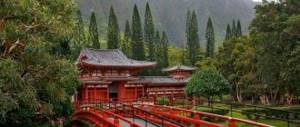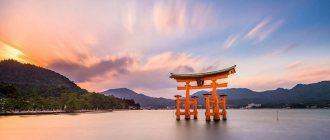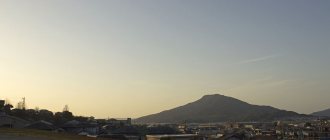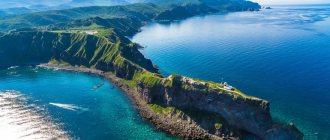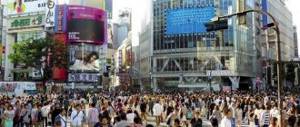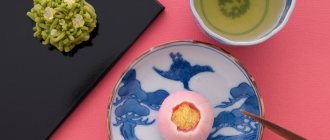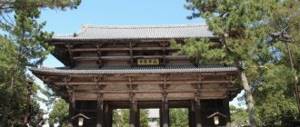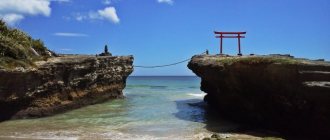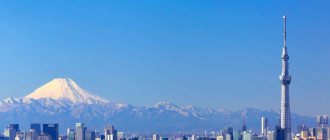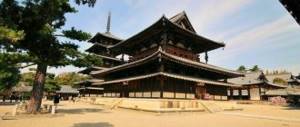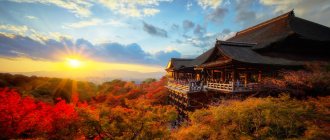Sapporo from A to Z: map, hotels, attractions, restaurants, entertainment. Shopping, shops. Photos, videos and reviews about Sapporo.
- New Year tours
around the world - Last minute tours
around the world
Sapporo is the fifth largest city in Japan, the largest city on the island of Hokkaido, and the capital of Hokkaido Prefecture.
Sapporo is a fairly young city for Japan; in 1857 its population was only 7 people, but now it has grown to 2 million. Although the city does not have as long a history as, for example, Kyoto, it attracts many tourists, primarily for its Snow Festival, as well as excellent hot springs and many resorts located nearby.
Outside of Japan, Sapporo is known as the city that hosted the 1972 Winter Olympics. In addition, Sapporo has hosted three Asian Winter Games - in 1986, 1990 and 2017.
If you smoke, please note that smoking is not allowed on the street or in public places in central Sapporo. However, there are certain areas and establishments in the city where smoking is permitted - but even there, be prepared to be asked to show identification.
Japan Nakajima Park
A unique symbol of Sapporo is Nakajima Park. This is the most interesting place in the city. The park is a miniature embodiment of ancient Japan.
The park is divided into two parts by the Toehira River and is located around a large pond. In Nakajima Park you can visit the National Puppet Theater, take part in tea ceremonies in the Japanese Garden, visit the Kitara Concert Hall or the Hokkaido Literary Museum, or simply relax after an exciting tour of Sapporo.
The most un-Japanese city
Sapporo differs from other cities in Japan not only in climate, but also in the architecture of the building. Precisely buildings built at the time of Japan’s complete orientation to the West. The buildings erected during this period are a complete copy of American construction projects. For example, the chapel, built in 1881, which is a local landmark, has nothing in common with Japan in its architecture, except for its geographical component. Everyone recognizes it as a Western structure. Also, the government building, built in 1888, has an easily recognizable Western style. At the moment it is a historical museum.
Nijo Fish Market
Nijo Fish Market is a famous historical market and a true cultural landmark of Sapporo. Here they sell crabs and salmon caught in the seas near the island. Shellfish are being sold everywhere and the cheers of excited fishmongers can be heard. Today, in addition to 30 branded stores, there are also a large number of seafood restaurants, which are considered a gourmet spot in Sapporo.
The history of the market goes back more than 100 years and it is believed that in 1903, fish sellers began selling on the streets here. Until the Second World War, fish was the main product, but now there are many shops selling vegetables, meat and confectionery.
Sapporo Art Park
Sapporo Art Park is located in the hilly Minami-ku area and is an open-air art museum. It opened in 1986 with the goal of redefining the art and culture of northern Japan. The construction of the museum was completed in 1999. The park covers an area of 40 hectares and features 73 sculptures by both Japanese and foreign sculptors. Depending on the season, the sculptures appear to the audience in their new form, revealing their other side.
In addition, various workshops and master classes are held in the park, with the help of which you can become familiar with the great art of sculpture. Off-site classes for groups are possible. There is also a stage in the park where performances and concerts are often held.
Moiwa-yama observatory
Moiwa-yama Observatory, located near the center of Sapporo, offers an amazing view from a height of 531 m. From its top, you can see the rooftops of Sapporo and the Ishikari Bay of the Sea of Japan with the huge mountains in the distance. You can come here at any time of the year to see the landscape of Sapporo at night, an amazing snowy landscape. Therefore it is a very popular place. You can use a cable car to ascend from the ground to the halfway point, and from there the unique Morris Car funicular will take you to the top.
How to get there
Hakaido has 13 airports with scheduled flights, and 8 airports accept jet aircraft. There are 34 flights per day between Shin-Chitose (Sapporo) and Haneda (Tokyo) airports. The number of passengers is the largest in the world for closed (non-transit) lines.
Hokkaido is connected by ferry to the following cities: Honshu, Tokyo, Niigata, Maizuru, Nagoya, Oarai, Sendai. There are a total of 220 flights per week.
Seasonal ferry service is available on the Otaru - Kholmsk and Wakkanai - Korsakov routes.
Sapporo TV Tower
Sapporo Tower is 147.2 meters high and is located on the banks of the Sosei River at the western end of Odori Park in the heart of Sapporo. It was built in 1956, the year television broadcasting began in Hokkaido. Since then, for more than half a century, the TV tower has been one of the landmarks of Sapporo.
At night, the TV tower is beautifully illuminated, making it a good subject for photographs. The time the lights turn on and off depends on the season, and on holidays the TV tower is illuminated in a special way.
Sapporo
Sapporo is one of the largest cities in Japan (ranked 4th, behind only Tokyo, Yokohama and Osaka). It is a major industrial and economic center, as well as one of the most important educational and cultural centers of Japan.
Sapporo is home to the famous Snow Festival. In addition, the city is famous for its resorts: in its vicinity there are many thermal springs.
general information
For people who are not too interested in the history and culture of Japan, the city is known primarily for the fact that the 2017 Asian Winter Games were held in Sapporo. But where exactly is the city of Sapporo, on which island?
The city is located on the island of Hokkaido, with Sapporo being the capital of the region. It is not difficult to find Sapporo on a world map: it is located in the west of Hokkaido, not far from the coast, almost at the same latitude as Vladivostok. The city stands on the banks of the Ishikari River, which flows into the Sea of Japan.
Sapporo was founded in 1868 - immediately as the administrative center of the island. The city developed rapidly; already in 1907, a college was founded here, which became part of Tohoku University.
The city of Sapporo in Japan has a special status: it is a “city designated by special government decree.” There are only 13 settlements in the country with the same status as Sapporo, and in Hokkaido it is the only one of its kind.
The population of Sapporo is almost 2 million people. Many of them are employed in the tourism industry, but the city also has a well-developed industry: heavy (mechanical engineering, woodworking, paper, metalworking) and food. The city is home to Hokkaido University, one of the 7 National Universities of Japan.
Climatic conditions
The climate in Sapporo is humid continental. Summer here is usually hot and quite dry. The temperature rises to +22…+26°С, the maximum recorded temperature is +36.2°С. September is usually slightly warmer than June. It still rains in the summer; June is the driest month of the year, with only about 47 mm of precipitation, and in July and August there are already 83 and 124 mm, respectively. The driest months of the year, besides June, are April and May.
In winter, Sapporo is quite cold: usually in December the air temperature is about -3...-4°C, January and February are colder, the thermometer drops to -6...-8°C. But there are also much frostier winters, when the temperature drops to -17...-20°C. Winters are snowy: the total depth of snow cover is about 590-600 mm.
Resorts
In Sapporo there are the ski resorts of Sapporo Teine (located within the city limits) and Sapporo Kokusai (near the city); from the latter you can quickly reach the Snow World resort of Kiroru. In addition to ski resorts, the city also has thermal resorts. A significant part of them are located in the Jezankei recreation area.
What to see in Sapporo?
The clock tower is considered the symbol of the city; it is she who is most often depicted in photos of Sapporo, which is quite unusual for Japan - temples are the “calling cards” of other cities. It is worth climbing the TV tower, which offers beautiful views of the city, as well as the Hyakunen Kinentou Memorial Tower.
Other attractions of Sapporo, atypical for Japan, are the Beer Museum and the Ishiya Chocolate Factory, where you can taste Shiroi KoiBito, a white chocolate that is produced only here in the country.
Also worthy of attention:
- Art parks, Odori, Nakajima, Makomanai;
- Salmon Museum;
- Botanical Garden;
- Modern Art Museum;
- pioneer village.
Some travel companies offer Russian-language excursions to Sapporo, during which you can get acquainted with the city's attractions, learn about the history of the city, its temples and other buildings.
Events in the city
The Sapporo Snow Festival is one of the most popular non-public holidays in Japan. Its other name is the Snow Figure Festival. It has been held annually since 1950, when local schoolchildren built several snow figures in the central park. The festival lasts a week, during these days about 2 million people come to Sapporo.
Where to live?
The city offers a wide variety of accommodation options - from the cheapest to the most elite and expensive, and 5* hotels in Sapporo are considered one of the best in Japan. There are few bed and breakfast hotels in Sapporo: even 2* establishments usually provide more services to their guests. The best inexpensive options include:
- 3* JR Inn Sapporo-eki Minami-guchi;
- 2* Hotel Relief Sapporo Susukino;
- 3* JR Inn Sapporo-eki Minami-guchi;
- 3* APA Hotel TKP Sapporo Eki-Kitaguchi Excellent.
And of the more expensive options, the best are rightfully considered:
- Premier Hotel – Tsubaki – Sapporo;
- Sapporo Grand Hotel;
- Hotel Okura Sapporo;
- Cross Hotel Sapporo.
Restaurants
The city has many restaurants and cafes where you can taste national Japanese cuisine. Even the "budget" eateries look very attractive and offer the best quality food. Among the most popular inexpensive establishments are:
- Aji No Tokeidai cafe, where ramen noodles are their specialty;
- Sapporo Beer Garden bar, located near the Beer Museum. Here, visitors pay a certain amount to enter, after which they can enjoy any drinks and snacks at the bar for 100 minutes;
- Hiraku seafood restaurant.
Purchases
The city is sometimes called the shopping capital of Japan. Residents of other cities, even large ones, come to Sapporo for shopping. The main place for shopping is the Tanuki Koji shopping street; it is completely covered and consists exclusively of shops and cafes. There are shopping arcades even underground.
How to get to Sapporo?
The fastest way to get to the city is by air. The airport serving Sapporo (it is called Chitose and is located 5 km from the cities of Chitose and Tomakomai) accepts both international flights (from East Asian countries - China, Korea, Taiwan, Hong Kong, as well as from Russia - from Sakhalin) and domestic flights : Flights arrive here from almost every city in Japan.
How to get from Tokyo to Sapporo? The fastest way is by air; A direct flight lasts one and a half hours, a flight with a transfer lasts 2 hours 20 minutes. You can also get there by high-speed train, the journey will take about 9 hours. If you go by car, depending on the route you choose, the journey will take from 16 to 19 hours.
Transport
The city has well-developed public transport. The Sapporo subway opened ahead of the Winter Olympics, which took place here in 1972. The second line began operating in 1976, and the third in 1988. Now the total length of the lines is 48 km.
In addition, trams operate in the city. The first one went on line in Sapporo in 1910. And the most popular type of transport in the city is JR trains, which, without exaggeration, can get you anywhere in the city.
Shiroi Koibito Park
Shiroi Koibito Park is a theme park where you can try Sapporo's famous Shiroi Koibito cookies, take tours of the places where they are made, try making heart-shaped Shiroi Koibito, and relax in an open-air cafe equipped with antique furniture. During a tour of the factory, you can see the cookie making process, including the steps of adding chocolate filling between freshly baked cookies, cooling, indicating expiration dates and packaging into individual boxes. In the information corner you can learn more about the history of the confectionery and chocolate.
Sapporo - a city surrounded by nature
The largest number of tourists visit Sapporo to conquer the mountain slopes on skis or snowboards. Ski resorts in Sapporo occupy first places in the hearts of tourists. In addition, the snow in Japan is considered the fluffiest and softest in the world. Modern slopes, equipped for night descents, are sure to be suitable for those who are looking for new sensations and are hunting for the next dose of adrenaline. There are various winter resorts around the city.
Those who do not ski, and are generally far from sports and stress, but have a desire to conquer the peak, can conquer Mount Moiva.
Mount Moiwa can be conquered here by cable car. The height of Capelin above sea level is 531 meters. This climb up the mountain will present to the attention of tourists from the glass cabin of the cable car a Buddhist structure - the Stupa of Peace. Its purpose is to create peace in the world. There is a small temple at the top of the mountain, which is a rarity in Sapporo.
Evening and nightlife in Sapporo takes place in the city center. There you can relax well and mentally. Bars located at every step will not let you get bored.
The concern for its citizens and visiting tourists is touching to the core, which is expressed in the fact that smoking in the city is allowed only in specially designated places (in established pavilions), as well as special containers with gravel and sand located throughout the city, for this purpose so that residents and guests of the city in winter, when walking, can take sand and add it to themselves in those places where it is slippery, so as not to slip and fall.
Jozankei Onsen
Jozankei Onsen is located in the Shikotsu-Toya National Park, in the suburbs of Sapporo on the Toyohira River and is a picturesque recreation area beloved by tourists and local residents. One of Japan's most famous hot springs is located here. Its water contains a number of salts, hydrogen sulfide, boric acid, sodium bicarbonate and sulfur, and therefore is an effective remedy for rheumatism, neuroses, gastritis and a number of other diseases. You can also have a fun and active time here: golf, horse riding or skiing. Jozankei is known for its beautiful autumn scenery.
The park got its name thanks to the Buddhist monk Dzezan, who stopped here to rest in 1871. Up to 2,400,000 tourists come to Jozankei every year.
Susukino
The largest entertainment district on the island of Hokkaido, Susukino is home to approximately 5,000 neon-lit shops and eateries. This is an ideal place for a shopaholic tourist. It was originally a red light district in the 19th century. Even today there are quite a lot of sex shops here, but compared to the red areas of Tokyo, it is quite safe.
There are many tourist attractions in Sapporo. There is an urban center NORBESA, designed in the theme of an oasis, with a Ferris wheel on the roof. It is very popular among tourists. There is also an indoor shopping arcade called Tanukikoji near Susukino. Here you can find a variety of clothing and household goods stores for 100 yen.
Notes
- The area is indicated according to the website [www.gsi.go.jp/KOKUJYOHO/MENCHO-title.htm Geospatial Information Authority of Japan
] (Japanese) taking into account [www.gsi.go.jp/KOKUJYOHO/MENCHO/201110/opening. htm changes], published October 1, 2011. - [www.pref.hokkaido.lg.jp/ss/tuk/900brr/index2.htm 住民基本台帳人口・世帯数] (Japanese). Hokkaido Governorate Administration (August 1, 2014). — Population of Hokkaido Governorate. Retrieved August 31, 2014.
- "[news.bbc.co.uk/2/hi/asia-pacific/7437244.stm Recognition at last for Japan's Ainu]". BBC News. July 6, 2008
- ↑ 12
[hometown.infocreate.co.jp/hokkaido/sapporo/rekisi.html Hometown Homepage – Look back a bit] - [www.city.sapporo.jp/minami/yawa/mokuji/1furusatono/furusatono.html Sapporo.jp]
- New Sapporo History 5th edition (Japanese: 新札幌市史第5巻Shin Sapporo Shishi
) - [www.cbc.ca/world/story/2008/07/05/g8-protest.html CBS News World - July 5, 2008]
- ↑ 12
[www.city.sapporo.jp/city/aramashi/ Sapporo City Official Homepage - the outline of Sapporo] - (Japanese) [www.data.jma.go.jp/obd/stats/etrn/view/nml_sfc_ym.php?prec_no=14&prec_ch=%90%CE%8E%EB%8Ex%92%A1&block_no=47412&block_ch=%8ED %96y&year=&month=&day=&elm=normal&view= 気象庁 | 平年値(年・月ごとの値)]
- [www.city.sapporo.jp/kokusai/sistercity/姉妹都市]
- [plaza-sapporo.or.jp/citizen_e/sister_cities/sister_cities.html Sister Cities]
